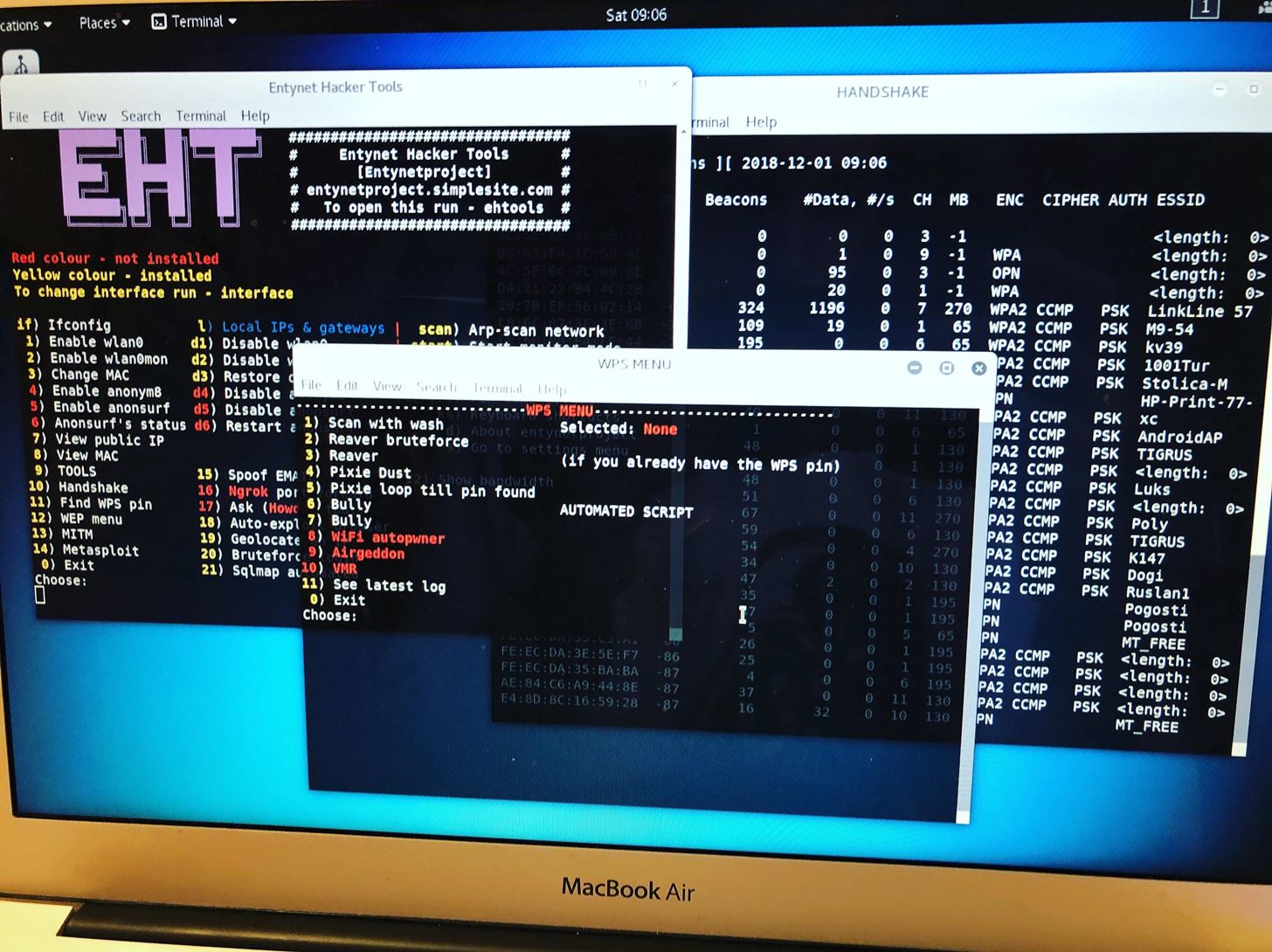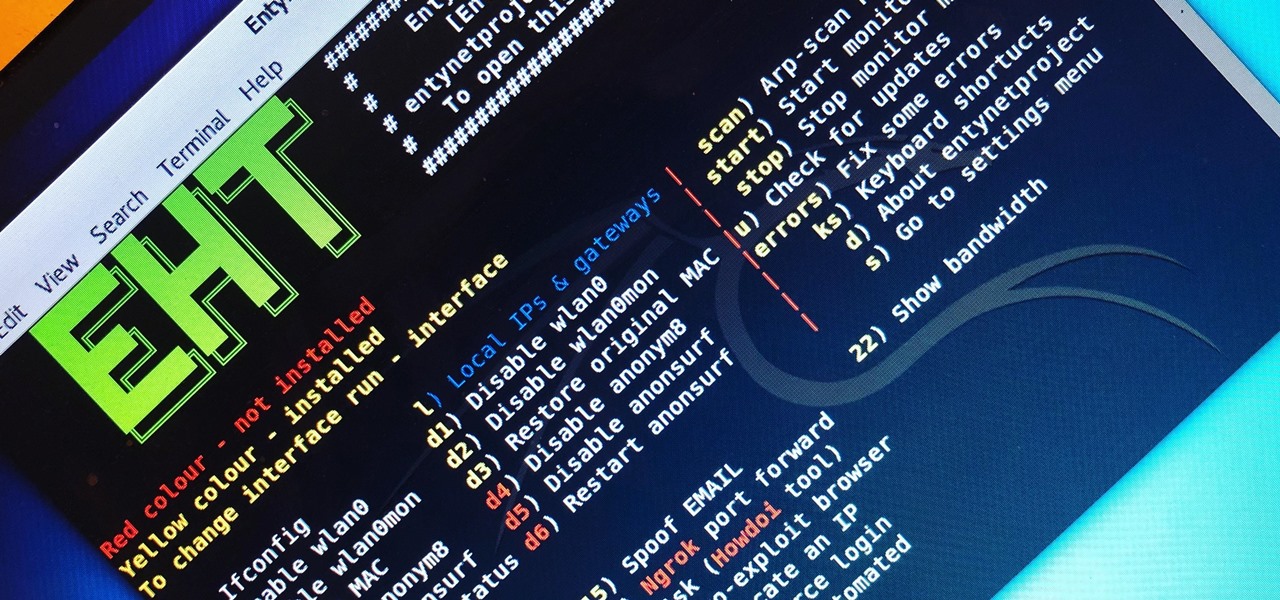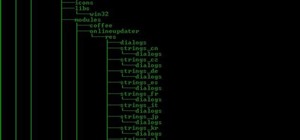Wi-Fi tools keep getting more and more accessible to beginners, and the Ehtools Framework is a framework of serious penetration tools that can be explored easily from within it. This powerful and simple tool can be used for everything from installing new add-ons to grabbing a WPA handshake in a matter of seconds. Plus, it's easy to install, set up, and utilize.
Attack Frameworks
Most new Wi-Fi hacking tools rely on many of the same underlying attacks, and scripts that automate using other more familiar tools like Aireplay-ng are often referred to as frameworks. These frameworks try to organize tools in smart or useful ways to take them a step beyond the functionality or usability of the original program.
An excellent example of this are programs that integrate scanning tools like Airodump-ng, attacks like WPS Pixie-Dust, and cracking tools like Aircrack-ng to create an easy-to-follow attack chain for beginners. Doing this makes the process of using these tools easier to remember and can be seen as sort of a guided tour. While each of these attacks is possible without the hand-holding, the result can be faster or more convenient than trying to do so yourself.
An example of this we've covered is the Airgeddonframework, a wireless attack framework that does useful things like automating the target selection process and eliminating the time a user spends copying and pasting information between programs. This saves valuable time for even experienced pentesters but has the disadvantage of preventing beginners from understanding what's happening "under the hood" of the attack. While this is true, most of these frameworks are fast, efficient, and dead simple to use, enabling even beginners to take on and disable an entire network.
UX/UI Improvements for Beginners
I'll be going through a new script that attempts to create a friendlier way for beginners to start using some of the best and most reliable hacking techniques.
The focus in attack frameworks is to anticipate better what the hacker will be trying to do and pull together the necessary tools to execute the attack with a minimum of interaction from the user. In this way, the user interface and experience become the primary goal, and the script has the purpose of anticipating the tools and tactics a penetration tester would need quick access to in the field.
The Ehtools Framework starts by merely typing the letter ehtools or eht into a terminal window, then it asks for the name of your network interfaces after the first run. It uses the names you supply to connect to the tools needed to execute any attacks you select. Aside from that initial input, the majority of the possible attacks can be performed merely by choosing the option number from the menu. This means you can grab a network handshake or download a new hacking tool like Pupy by just selecting from one of the menu options.

Extending Usability & Curating Applications
The benefit of the ehtools is that it was built with penetration testers in mind. This means it's essentially a guided tour through some of the best and most potent scripts available today. Some of the most easily accessible menu options include quick access to networking information like the gateway IP (usually the router), your IP address, MAC address, and a scan function that executes an ARP scan to reveal all other devices on the network.
Use Basic Networking Tools
To begin, we can access data about the network we're currently connected to, as well as any network interfaces, from the main menu. Here, we can find local information by just typing l to pull up local IP information, as seen below.
This allows us to do things like scan the network for other devices. This part of Ehtools Framework gives us better visibility on a network and situational awareness of what devices are around us. The various information can be broken down as follows:
if - Runs ifconfig and gives the names and information about all network devices.
1 - Enable wlan0 (d1 disables it).
2 - Enable wlan0mon (d2 disables it).
3 - Randomize or set the MAC address to a specific value.
7 - View the public IP address your computer is leaving on sites you visit.
19 - Look up the physical address of a given IP address to determine it's relative location.
scan - Start an ARP scan on the network to discover nearby devices.
start - Start monitor mode on the wireless network adapter.
stop - Stop wireless monitor mode on the network adapter.

Install New Tools
Part of the fun of Ehtools is how easy it is to add new tools to our arsenal. To demonstrate this, let's download Pupy, a Python-based RAT designed to take control of other computers on the network. We can select option 9 to access the list of tools in Ehtools Framework.
From the next menu, the tools are broken down into major categories, with options for managing the installation of scripts. The options presented are:
1 - Wi-Fi tools (tools for attacking wireless networks).
2 - Remote access (tools for getting remote access to other devices and remotely managing them).
3 - Information gathering (collecting intelligence on people or website).
4 - Website tools (tools for exploiting or attacking sites).
5 - Other (a miscellaneous collection of other hacking tools)
You can also manage your installed tools by accessing option 6. To download Pupy, we'll go to option 2, which is remote access. Here, we will see a list of different tools for remote access, and we can select option 3 for Pupy. Here, we can see Pupy is not installed because it appears in red.
To install Pupy, select 3, and when prompted, type install to have Ehtools manage the installation for you.










































Be the First to Respond
Share Your Thoughts